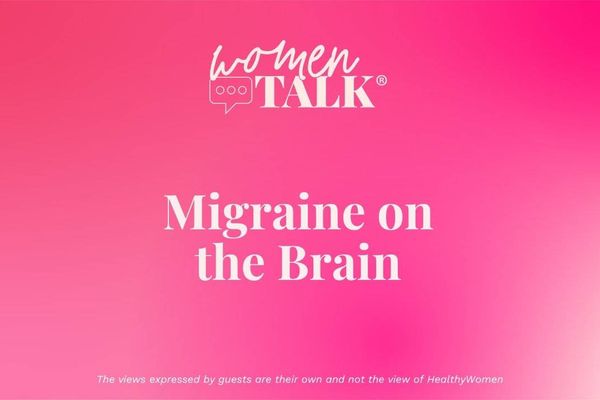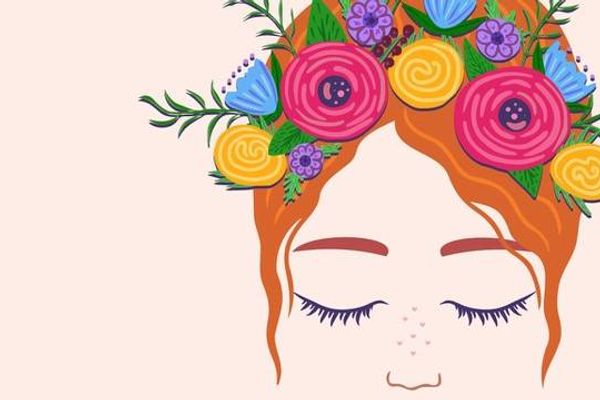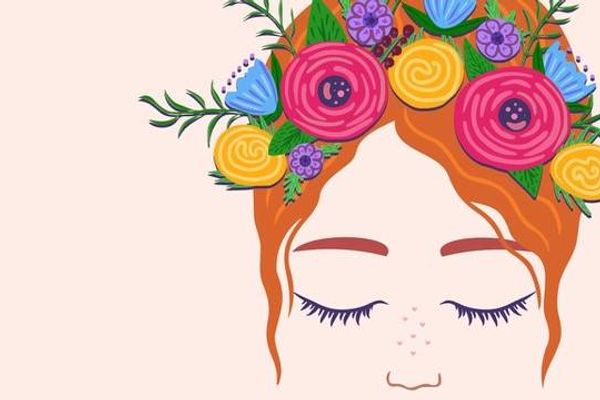A migraine attack is more than just a headache. Migraine disease can be a total-body experience, and the triggers and symptoms of migraine attacks are highly individual. HealthyWomen spoke with Maureen Moriarty, DNP, associate professor of nursing at Marymount University’s Malek School of Nursing, about this common but commonly misunderstood disease. The good news? Attacks can be treated, and some can even be prevented by knowing and avoiding your personal triggers.
What is migraine disease?
Migraine disease is an inherited neurological, or nervous system, disorder characterized by symptoms that can range from severe or persistent head pain to nausea and vomiting. It can impact cognition, change sensory perception, and even reduce balance and strength.
What’s the difference between a headache and a migraine attack?
A headache involves head pain. A migraine attack is different because the source of it is neurological, and it causes symptoms in addition to head pain. Symptoms include throbbing, pounding head pain that can be moderate to severe in intensity, is often only on one side and is aggravated by physical activity. But a migraine attack also involves other symptoms, like light and sound sensitivity, nausea, or even vomiting. One out of 3 people experience an aura, which is kind of like a warning, before a migraine attack. The most common type of aura is a vision change. People describe flashes of light, bright colors or blurred vision. Other auras include a change in sensation like numbness, tingling, decreased strength or loss of balance. Auras can last from five to 60 minutes.
How long do migraine attacks last?
Migraine attacks commonly last between four and 72 hours but can go on for even longer in some cases.
How does migraine disease affect people's work and personal lives?
Disabling pain can prevent people from going to work, social and family events, or school. In fact, migraine disease is the second most common cause of disability among people under age 50, and it’s the most common cause of disability in young women. Even between attacks, people with this disorder live with the psychological stress of worrying about the next episode, and that can lead to restricting activities out of fear.
How can someone figure out what triggers their migraine attacks?
Migraine attacks can be triggered by external and internal factors, and triggers are different for everybody. People with migraine disease can start to learn their own triggers by paying attention to external factors such as bright light exposure, loud noise, strong odors — tobacco smoke, for example — and changes in barometric pressure through weather or air travel. Internal triggers can include eating certain foods, changing sleep habits, skipping meals, having too much caffeine or becoming dehydrated. Phases of the menstrual cycle can also trigger migraine attacks in some women.
How can keeping a diary be useful for patients with migraine disease?
By recording triggers, frequency, duration, symptoms and intensity of attacks, people can begin to recognize patterns and take action to manage their disease. For example, if each severe attack comes after you’ve traveled on a plane, you could speak with your healthcare provider about options to help you before flying.
What are treatment options for migraine attacks?
Treatment falls into two categories: acute and preventive. Acute medications treat a migraine in progress and can include medicines like triptans, ditans and gepants. You can also use general pain medications, such as NSAIDs like naproxen or ibuprofen.
Preventive medication is recommended for people who experience more than four days with migraine attacks each month. Preventive medications, approved by the American Academy of Neurology, include beta blockers, antiseizure medications, some antidepressants and onabotulinum toxin A, commonly known as Botox. Botox is used for people with chronic migraine, which is 15 or more migraine days each month. New therapies for prevention include medicines known as gepants and monoclonal antibodies that target a protein in the brain and nervous system called calcitonin gene-related peptides (CGRP). It’s believed that CGRP release in the brain promotes migraine attacks.
Can any medicines (including birth control) make migraine attacks worse?
Yes, some medications can aggravate migraine attacks. Estrogen-based hormonal therapy, like birth control pills, can increase migraine attacks in approximately 1 out of 3 women who use them, either for contraception or to treat other conditions and symptoms of menopause. Also, any medication that opens the blood vessels — for example, nitroglycerin tablets, used to treat chest pain — can aggravate underlying migraine disease.
Is migraine disease hereditary?
Yes. Around 6 out of 10 people with migraine disease can identify a blood relative who also has the trait.
Is there a chance migraine symptoms might go away with time or hormonal changes like menopause?
For most women, migraine attacks start when they get their period and peak when they’re in their late 30s. The changes in estrogen levels in perimenopause may cause an increase in migraine attacks. This is why migraine attacks can improve in some postmenopausal women. However, around 1 out of 3 women continue to experience symptoms.
Are there any lifestyle changes that might help prevent migraine attacks?
Having a regular schedule can help. Getting up at the same time, going to bed at the same time, eating regular meals and staying well hydrated can help prevent migraine attacks. In up to 6 out of 10 people with migraine disease, certain foods and beverages can trigger attacks. These include alcohol, aged cheese, meats with nitrates and nitrites, citrus fruits and juices, bananas, chocolate, and MSG. Cigarette smoking or vaping may aggravate migraine disease. It’s important to identify your triggers. Regular exercise and maintaining a healthy weight will also help in migraine prevention. Stress — either good or bad — can bring on an attack. This can happen even when the source of the stress goes away. For example, students who remain healthy during exam week might experience an attack afterward.
This educational resource was created with support from Pfizer.
- Migraine Headaches Are a Family Affair ›
- What's Your Headache Type? ›
- Can Migraine Attacks Be Triggered? ›
- Healing Environments Need to Recognize Migraine Triggers ›
- When It's More Than Just a Bad Headache ›
- Most People Who Experience Migraine Are Women: Here’s What You Need to Know ›
- Migraine ›
- Managing the Workspace with Migraine - HealthyWomen ›
- Migraine or Headache? Understanding the Difference - HealthyWomen ›
- Advocacy Helps Me Handle My Migraines - HealthyWomen ›
- Mi trabajo de concientización es útil para controlar mis migrañas - HealthyWomen ›
- Migraine Toolkit - HealthyWomen ›
- Guía práctica para migrañas - HealthyWomen ›
- WomenTalk: Migraine on the Brain - HealthyWomen ›






